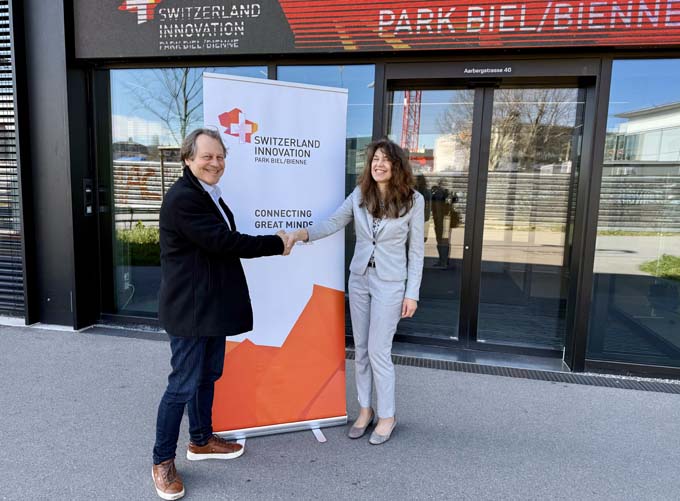Accident prevention in the workplace: how impact protection helps to prevent damage
Whether high-bay racking or blind spots, trucks or forklift trucks: in many companies, vehicles are not only constantly on the move, but also have to follow a tight schedule - and often in confined, confusing spaces. Impact protection can not only be the last, but often the only bastion standing between a harmless bump and potentially catastrophic industrial accidents.

Because as long as the vast majority of vehicles used for operational purposes are still driven by people - instead of computer chips - there is always a latent risk that all other warning and safety measures will not be effective. It is then important to be able to prevent the worst by using "brute force" ram protection.
What impact protection is - and what it is not
On a purely metaphorical level, operational ram protection is amazingly closely related to any kind of insurance: It is never needed in the normal day-to-day operations of the company. It is exclusively a means that is intended to take effect when other technical and organizational protective measures have already failed.
In this case, impact protection must always be capable of absorbing heavy loads or kinetic energy before something is damaged, perhaps causing a cascading catastrophe.
There are different types of impact protection. There are always Impact protection profiles for accident prevention However, they are made of materials that, if necessary, are even capable of stopping a forklift truck hitting the ground in an uncontrolled and unbraked manner - for example, before it hits the vertical struts of a high-bay warehouse, buckles and thus possibly brings down the entire warehouse like dominoes.
From a material point of view, therefore, everything in ram protection is primarily broken down into three materials:
- Steel: It is equally resilient in all three axes. Thanks to the possibility of producing very complex alloys, extremely resistant impact protection elements can be manufactured with regard to the required shaping and other factors - and at an affordable price.
- Concrete: Its advantage lies not least in the fact that it can be cast into very individual shapes on site if necessary - unlike steel in a cold state. Due to its sometimes enormous mass, a concrete ram protection is considerably heavier and bulkier than steel, but can sometimes be installed without anchoring and therefore flexibly.
- Plastic: This material is (still) a rather rare representative in the field of impact protection. However, its properties are considerably more flexible than those of steel and concrete. This means that such plastic elements can return to their original shape after a pile-driving incident. The plastic also does not lose its material properties even at very low temperatures. This type of impact protection is therefore a good choice for deep-freeze areas, for example. In the form of mats, plastic can also be used as impact protection padding for existing columns.
Ultimately, that means: The aim of impact protection is always to use a particularly energy-absorbing element/material to keep impact energy away from important components so that their integrity is not impaired.
It is therefore explicitly not (only) about warning. Virtually all impact protection elements are designed in eye-catching warning colors. However, this visual warning effect is only an add-on to increase the impact. The main purpose is always to prevent an impact.
What the Swiss laws say
Some readers may have already seen in internet videos the downright disasters that can occur without impact protection. This definitely does not require crazy impact speeds and energies. On the contrary, depending on the design, many components react extremely sensitively to forces acting from a different direction than intended.
Once again, rack storage systems are an excellent example of this: their vertical struts are ideally suited to bearing loads acting from above. However, even a small bending moment acting transversely to the struts can cause buckling and thus a sudden loss of integrity.
So it's no wonder that Switzerland is dealing intensively with the topic at the level of standards and legislation - which means that impact protection is automatically mandatory in many cases.
- The EKAS Guideline No. 6508. It deals with hazard identification and risk assessment, which may result in the need for impact protection.
- The Employment Act ArGV, in particular Articles 3 to 9, which also contain protective measures.
- The Ordinance on Accident Prevention VUV, in this case Articles 3 to 10.
- SN EN 61310-1, from which the typical coloring in particular emerges. As impact protection systems are usually permanently installed, they are therefore typically colored yellow and black - a red and white color scheme tends to be used for temporary obstacles and barriers.
There is also the Swiss Accident Insurance Fund SUVA. It provides stringent Specifications for planning internal traffic routeswhich in many cases also results in an obligation to install impact protection.
By the way: Laws cannot cover everything. Experience has shown that it is therefore better to anticipate less realistic scenarios when it comes to impact protection and to act according to the maxim "a lot helps a lot" - even where no protection is prescribed.
What impact protection can look like - and what it protects
The central performance spectrum is uniform: impact protection should always protect important elements and people in the company from impact energies that can cause damage or even death.
However, for both architectural and technical reasons, there is no "one" type of impact protection that can be used for everything. In practice, we are already talking about different profiles and round materials at the base. This means that the shapes and areas of application are very diverse. Some of the most important types:
- Impact protection hoops: They protect inventory and personnel in particular and can also effectively seal off larger areas thanks to their shape.
- Crash protection railings: They are similar in design to stirrups, but are intended for much larger areas. For example, the spatial separation of driveways and walkways.
- Pipe and cable pile protectors: These profiles are fitted like a protective cover over power cables and other cables.
- Impact protection bollards: The cylindrical classic not only protects, but can also automatically enforce wider and therefore safer bend radii through clever positioning.
- Collision and post protection: Sheathing and prefabricated profiles that protect all kinds of posts and beams. Depending on the material, also intended to make a collision with people less serious.
In principle, there is hardly any operational area that could not be made safer with appropriate impact protection.
If you think through to the last consequence the disastrous chain of events that even a supposedly small bump from an industrial truck can trigger, it is definitely not wrong to apply very extensive impact protection - the costs for this are practically always lower than the consequential costs that can occur in the event of damage without protection.









